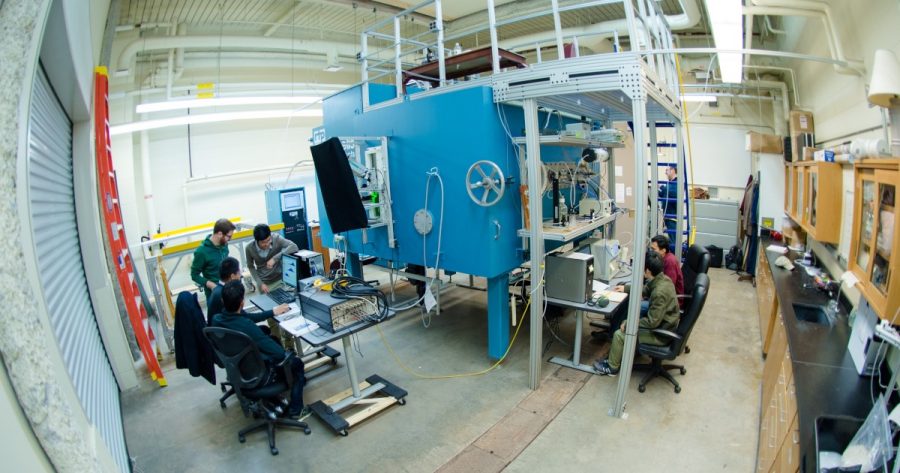$4 million in NSF funding makes the Physics Pi Cloud Chamber and extensive supporting instrumentation available to the atmospheric sciences community for investigations of atmospheric processes including aerosols and clouds. The award will also support a 10-week experiential learning program for visiting students through a Pi Chamber laboratory fellowship program and broaden student participation in the physical sciences. Funding will also go towards the design of a larger cloud chamber.
What is the Pi Chamber?
The Pi Chamber at Michigan Technological University simulates cloud conditions within the range of pressures and temperatures occurring in the lower part of the atmosphere (the troposphere). It has a proven record of enabling productive and insightful research in aerosol-cloud interactions, ice nucleation, mixed-phase cloud properties, cloud optical properties, and moist Rayleigh-Bénard convection in the atmospheric sciences.
Design of a larger cloud chamber in the works.
Current cloud chambers do not allow for collisions between cloud drops as would occur in natural clouds. That’s why the NSF is funding an Aerosol-Cloud-Drizzle Convection Chamber too. NSF support of this project facilitates a cohort of researchers to conduct preliminary design work on a large cloud chamber capable of producing droplets up to the size of drizzle, which is a key transition point for fully understanding the development of precipitation. The proposed chamber would dramatically expand the US and international research community’s ability to conduct laboratory studies of clouds.
